Hanwen Zhong
Transforming Vision Transformer: Towards Efficient Multi-Task Asynchronous Learning
Jan 12, 2025



Abstract:Multi-Task Learning (MTL) for Vision Transformer aims at enhancing the model capability by tackling multiple tasks simultaneously. Most recent works have predominantly focused on designing Mixture-of-Experts (MoE) structures and in tegrating Low-Rank Adaptation (LoRA) to efficiently perform multi-task learning. However, their rigid combination hampers both the optimization of MoE and the ef fectiveness of reparameterization of LoRA, leading to sub-optimal performance and low inference speed. In this work, we propose a novel approach dubbed Efficient Multi-Task Learning (EMTAL) by transforming a pre-trained Vision Transformer into an efficient multi-task learner during training, and reparameterizing the learned structure for efficient inference. Specifically, we firstly develop the MoEfied LoRA structure, which decomposes the pre-trained Transformer into a low-rank MoE structure and employ LoRA to fine-tune the parameters. Subsequently, we take into account the intrinsic asynchronous nature of multi-task learning and devise a learning Quality Retaining (QR) optimization mechanism, by leveraging the historical high-quality class logits to prevent a well-trained task from performance degradation. Finally, we design a router fading strategy to integrate the learned parameters into the original Transformer, archiving efficient inference. Extensive experiments on public benchmarks demonstrate the superiority of our method, compared to the state-of-the-art multi-task learning approaches.
EVLM: An Efficient Vision-Language Model for Visual Understanding
Jul 19, 2024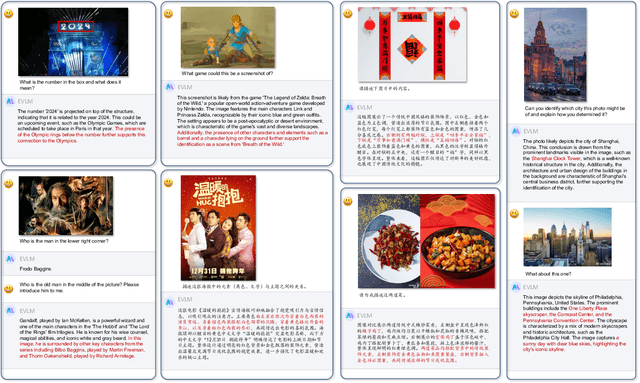
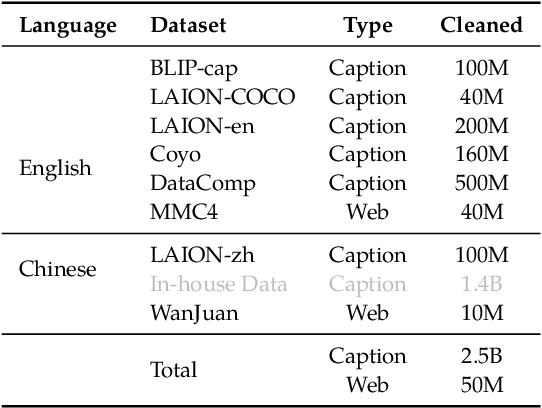
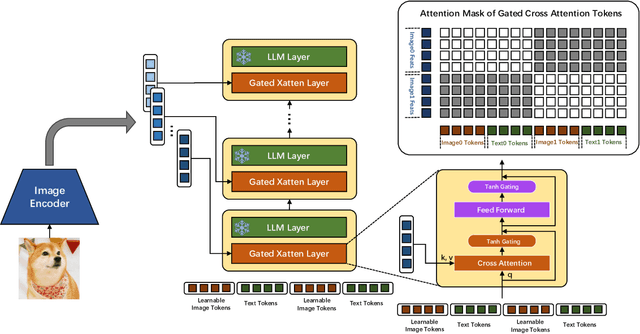

Abstract:In the field of multi-modal language models, the majority of methods are built on an architecture similar to LLaVA. These models use a single-layer ViT feature as a visual prompt, directly feeding it into the language models alongside textual tokens. However, when dealing with long sequences of visual signals or inputs such as videos, the self-attention mechanism of language models can lead to significant computational overhead. Additionally, using single-layer ViT features makes it challenging for large language models to perceive visual signals fully. This paper proposes an efficient multi-modal language model to minimize computational costs while enabling the model to perceive visual signals as comprehensively as possible. Our method primarily includes: (1) employing cross-attention to image-text interaction similar to Flamingo. (2) utilize hierarchical ViT features. (3) introduce the Mixture of Experts (MoE) mechanism to enhance model effectiveness. Our model achieves competitive scores on public multi-modal benchmarks and performs well in tasks such as image captioning and video captioning.
AdaLog: Post-Training Quantization for Vision Transformers with Adaptive Logarithm Quantizer
Jul 17, 2024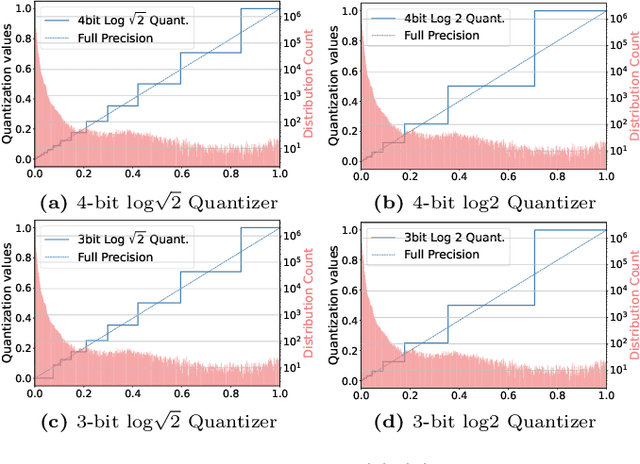
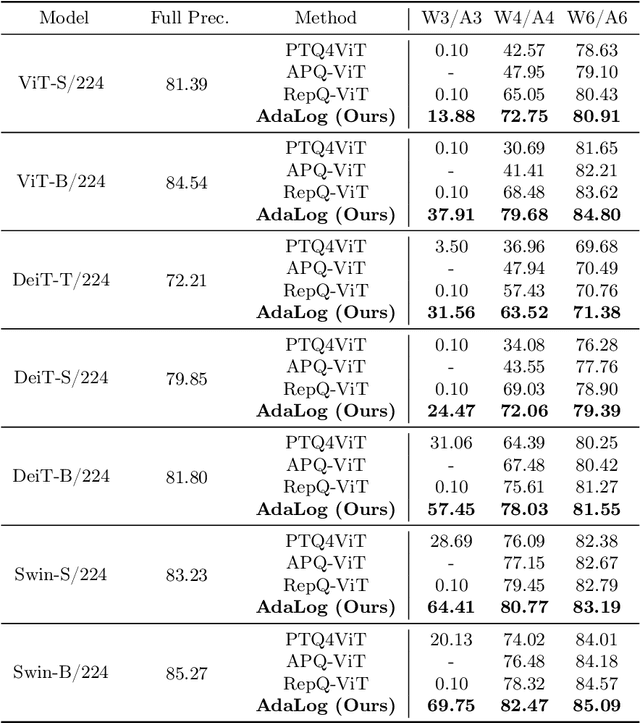
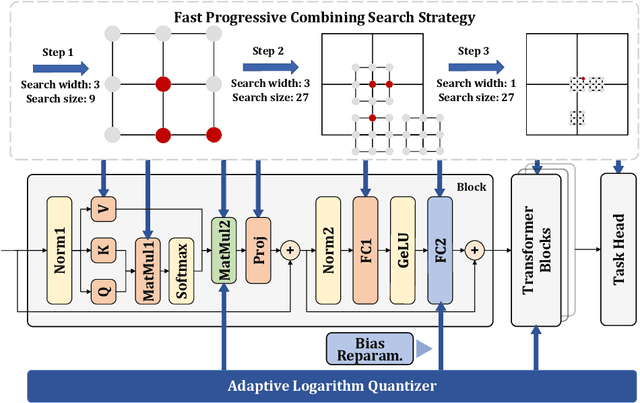
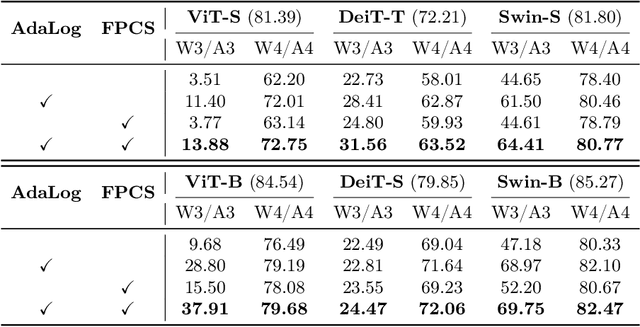
Abstract:Vision Transformer (ViT) has become one of the most prevailing fundamental backbone networks in the computer vision community. Despite the high accuracy, deploying it in real applications raises critical challenges including the high computational cost and inference latency. Recently, the post-training quantization (PTQ) technique has emerged as a promising way to enhance ViT's efficiency. Nevertheless, existing PTQ approaches for ViT suffer from the inflexible quantization on the post-Softmax and post-GELU activations that obey the power-law-like distributions. To address these issues, we propose a novel non-uniform quantizer, dubbed the Adaptive Logarithm AdaLog (AdaLog) quantizer. It optimizes the logarithmic base to accommodate the power-law-like distribution of activations, while simultaneously allowing for hardware-friendly quantization and de-quantization. By employing the bias reparameterization, the AdaLog quantizer is applicable to both the post-Softmax and post-GELU activations. Moreover, we develop an efficient Fast Progressive Combining Search (FPCS) strategy to determine the optimal logarithm base for AdaLog, as well as the scaling factors and zero points for the uniform quantizers. Extensive experimental results on public benchmarks demonstrate the effectiveness of our approach for various ViT-based architectures and vision tasks including classification, object detection, and instance segmentation. Code is available at https://github.com/GoatWu/AdaLog.
 Add to Chrome
Add to Chrome Add to Firefox
Add to Firefox Add to Edge
Add to Edge